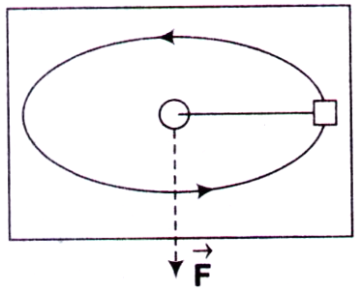The Lagrangian of a diatomic molecule is given by $$L = \frac{m}{2}\left( {\dot x_1^2 + \dot x_2^2} \right) - \frac{k}{2}{x_1}{x_2}$$ where, m is the mass of each atom and x1, x2 are displacements from equilibrium position and k > 0. The normal frequencies are
A. $$ \pm {\left( {\frac{k}{m}} \right)^{\frac{1}{2}}}$$
B. $$ \pm {\left( {\frac{k}{m}} \right)^{\frac{1}{4}}}$$
C. $$ \pm {\left( {\frac{k}{{2m}}} \right)^{\frac{1}{4}}}$$
D. $$ \pm {\left( {\frac{k}{{2m}}} \right)^{\frac{1}{2}}}$$
Answer: Option D
A. increases till mass falls into hole
B. decreases till mass falls into hole
C. remains constant
D. becomes zero at radius r1, where 0 < r1 < r0
A. $$\frac{c}{3}$$
B. $$\frac{{\sqrt 2 }}{3}c$$
C. $$\frac{c}{2}$$
D. $$\frac{{\sqrt 3 }}{2}c$$
The Hamiltonian corresponding to the Lagrangian $$L = a{{\dot x}^2} + b{{\dot y}^2} - kxy$$ is
A. $$\frac{{{p_x}^2}}{{2a}} + \frac{{{p_y}^2}}{{2b}} + kxy$$
B. $$\frac{{{p_x}^2}}{{4a}} + \frac{{{p_y}^2}}{{4b}} - kxy$$
C. $$\frac{{{p_x}^2}}{{4a}} + \frac{{{p_y}^2}}{{4b}} + kxy$$
D. $$\frac{{{p_x}^2 + {p_y}^2}}{{4ab}} + kxy$$
A. circular
B. elliptical
C. parabolic
D. hyperbolic


Join The Discussion